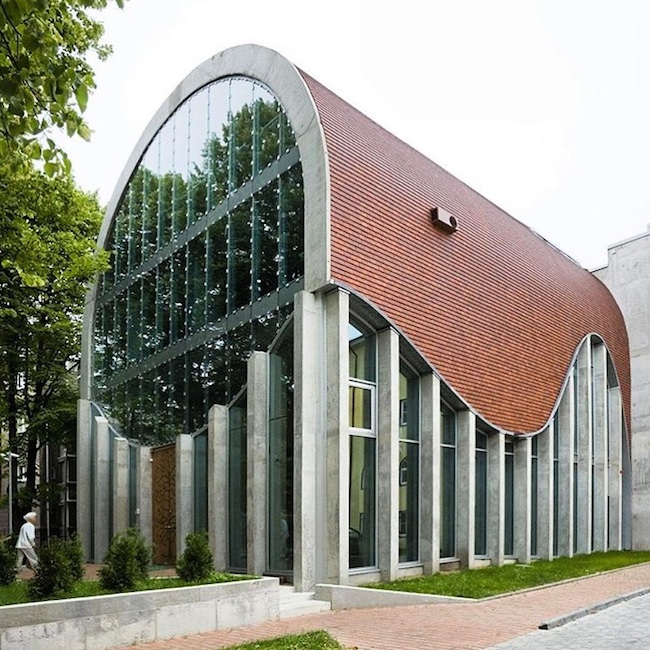TALLINN, Estonia — Context is important in order to fully appreciate Koko studio’s work on the Tallinn Synagogue in Estonia. The documented history of Jews in Tallin starts late, not until the mid-19th century. In 1856 Jewish soldiers in the Russian army started a chevra kadisha, a burial society. The city got its first synagogue in 1885, but then it was destroyed in a bombing raid by the Soviets in March 1944, while the city was occupied by Nazi Germany. For a long time after, Tallinn was one of the few capital city’s in Europe without a synagogue.
That changed in 2007 after Koko architecture studio completed work on the city’s new synagogue. The firm states that the building is important because it demonstrates continuity of Jewish culture in the city. The construction of the building was followed by Jewish communities from around the world and its opening was attended by former Israeli Prime Minister Shimon Peres and former Ashkenazi Chief Rabbi of Israel Yona Metzger.
The defining feature of the building is its tile-adorned entrance. It’s the color of red brick or terracotta and covers the structure with a satisfying slope design. All of that ruddiness outside gives way to a warm interior of intricately-cut wood panels. The studio says of the work:
The building takes Jewish religious traditions and details into account but does not hold on to the historic examples in architecture. The barrel vault form combines the rooms of religious and secular functions into a whole.
The main hall, where services are held, is located on the first floor. Wide stairs in the foyer, which lead up to the main hall, can be used as a place for ritual procession or talking with other community members depending on the time or event. The interior of the synagogue places emphasis on the layout of the rooms and the use of materials (timber, glass, concrete) but also on decorative ornament involving Jewish symbolism, which has been organically used on glass and timber surfaces and which either unifies or differentiates the rooms depending on the situation.
Do you love or loathe this work in contemporary ceramics? Let us know in the comments.

Images courtesy of the studio.




It’s nice, solid, beautiful interior design and the red blood to remember.